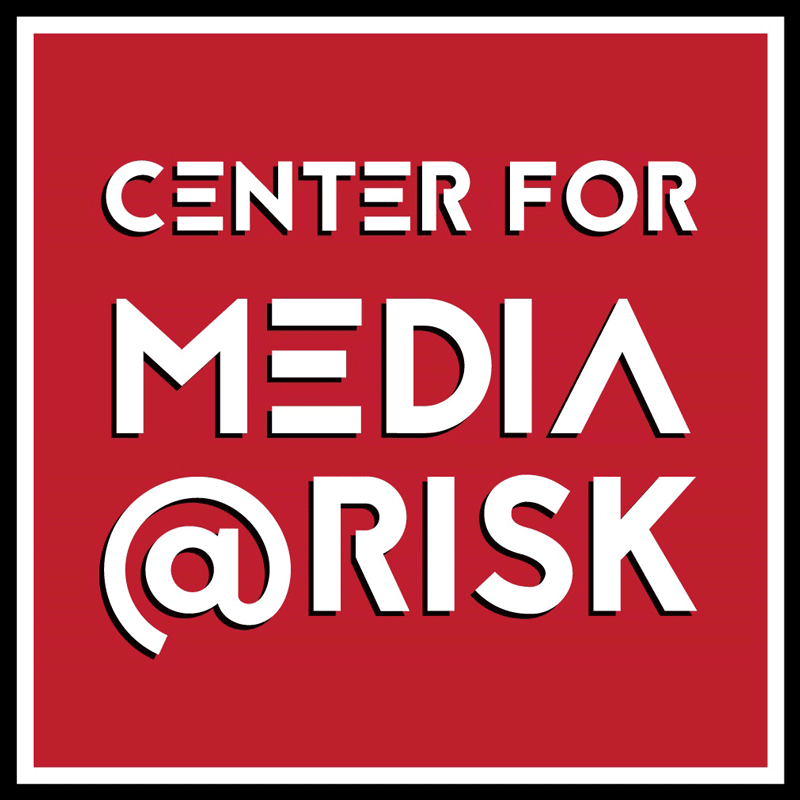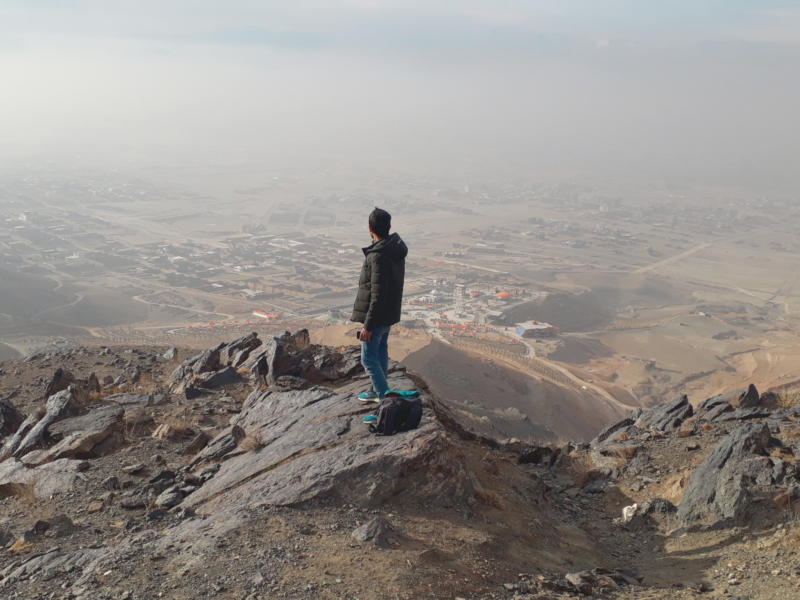Header illustration by Rama Duwaji for gal-dem’s 2019 UN/REST issue
In a British media landscape that is 94% white and 55% male, gal-dem CEO Mariel Richards understands the importance of addressing inequality and misrepresentation in the media industry. Covering a wide range of creative and editorial topics, gal-dem gives a platform to underrepresented voices in its online and print magazine, podcasts, clubs and events. Richards spoke with Steering Committee Member and Annenberg doctoral student Sophie Maddocks about gal-dem’s unique membership-based business model and its commitment to sharing the perspectives of people of color from marginalized genders.
gal-dem covered the COVID-19 pandemic differently from mainstream outlets. Articles like decolonizing healthcare were written by and for populations who were most affected by the pandemic. What do you think other news outlets can learn from gal-dem‘s approach?
It comes down to having a more inclusive and less hierarchical newsroom, because that’s where those commissioning concepts come from. We also made a conscious decision to stop publishing doom because the people who were hardest hit by the pandemic were already brutally aware they were going to be impacted more than anyone else. Mainstream organizations were bogged down by their surprise that marginalized people were harder hit by the pandemic. All these things our audience already knew, so we decided to focus on the things that weren’t being reported, like our article on South Asian corner shop culture. During the pandemic we relied completely on corner shops for our basic goods, and lots of them turned out to have a far better grasp of their supply chains than the major supermarkets.
We also focused on constructive content that provided resources and education to people excluded from mainstream media spaces. We produced content that taught people how to use their smartphones to make podcasts and digital artwork during lockdown. We wrote about how people can lobby their politicians. Our politics section always includes something saying, “This is now what you can do now” or “This is how you can take this forward.” It’s our duty to our readers to give them something to do. Otherwise, we’re repeating what mainstream media are doing already, which is just republishing trauma, over and over and over.

gal-dem operates across formats. You have a website and print publication, social media channels, podcasts, group chats, events and you’ve also published an anthology. How do you balance these different formats, in terms of labor, costs and revenue?
We will always do print because there is huge power in archiving something as a physical object. Print is never going to be how we make money, but it is a way of having voices and concepts recorded in spaces like the British Library and The Tate, where we donate copies. But there will be people who don’t have access to print, so we take the values that we’re trying to espouse and put them into as many different outlets as possible. There are people who have got gal-dem memberships because they listen to our podcast but have never read the online magazine and there are people who have print subscriptions but have never been to an event. We understand that our community has different ways of consuming information and to be truly accessible and inclusive, we present in as many different formats as we can.
This means that everyone wears two or three hats and has to learn on the job. But one of the great things about the age that we live in is that you can produce and disseminate information in so many ways. We record our podcast remotely and everyone is in different parts of the world. Our writers are from all over the world. Our events are scheduled both online and in-person.
After your advertising revenue was decimated during the COVID pandemic, you launched a successful membership model for readers. What ethical considerations are important to you in making the transition away from advertising and towards a membership model?
We have tiered our membership model to make it accessible to a wider group of people, and we have a ‘pay it forward’ option, so someone with more disposable income can donate a membership to someone who doesn’t have that same financial freedom. We are also really transparent with our members. So, they get updates on where their money has gone, like whether it has been spent on staffing or commissioning. We also include our members in research projects that shape the future of the business. We recently did a series of focus groups where members were asked what they found most valuable and challenging about gal-dem. We asked what they had not enjoyed, what they found icky and what advertisers we had worked with that they had questioned. It’s about keeping the dialogue open.
We are working on a transparency report that will look into the money that we’ve spent, not just in editorial commissioning, but also in commercial commissioning. How many women have we commissioned versus how many gender nonconforming people have we commissioned versus how many trans women or trans men have we commissioned? How many Black people versus South Asian? It will be a useful document for us, our readers and our members to assess whether or not our financial decision making is in line with the mission we said we’re going after. And that’s another way of us holding ourselves accountable to the wider community.

How do you deal with advertisers who only approach gal-dem at times when they need to appear more progressive, like Black History Month or PRIDE month?
When they come to you in those moments I think you have more power, because you can ask, “What are you doing in the other months of the year? How is this campaign going to do something beyond pink-washing?” The real power struggles have been when we work with brands outside of those months ‑ when their pink-washing is harder to call out. I think there’s no way to make those sorts of relationships 100% equitable. The only thing I have found consistently useful has been turning down advertising from a brand that comes to us with an obviously insincere attempt to boost awareness among particular groups that they have historically ignored. Instead, suggest some form of consultancy or learning and make sure that your staff is well compensated for its time.
From gal-dem I get accurate, contextualized and critical news. How do you think about issues like fake news, disinformation and trust?
Trust is a really big thing for us. It’s easy for critics to try and undermine our journalism by pointing to our size and the relative inexperience of a lot of our writers. We pride ourselves on being the place that publishes the first bylines of many journalists. It is their first byline because they’re of a marginalized gender, because they’re a person of color or because they face multiple marginalizations. It’s not their first byline because they’re not a great journalist and they don’t know how to fact-check.
Over the last year we have really hammered home our editorial processes and joined Impress, which is a UK-based media regulation group. This is not necessarily that important for our members or even for our readers, but for our journalists and editors. It is our way of saying to the wider industry that these very bold, often opinion-led critique pieces, just because they’re coming from a particular voice, doesn’t mean that they aren’t rigorously edited. We follow an editorial code, and we’re proud of that. This also sets an example for the industry to recognize that it doesn’t have a monopoly on being a trusted source of information. We can do that as well, even though we’re small.
Why do you think other organizations haven’t secured the trust that gal-dem has with its readers?
I think it’s hard for any organization, and it’s not easy for gal-dem either. There is an advantage to being relatively young because we can show how we have learned publicly and in ways that more formalized organizations are less willing to do. We have dialogues with people online because many of our journalists and editors are young and digitally active. We also have the benefit of the community that has grown with gal-dem. Lots of our members have been reading us for years and they’ve watched our journalism develop. So, when we do interact with our community, it is a much more personal, open relationship. I also think the membership model is an implicit recognition of trust that encourages gal-dem to be open rather than defensive with its audience.

Many Black and Brown employees have spoken out against the BBC, calling on the organization to address its institutional racism. Do you have any norms or policies for supporting your team in the UK’s hostile media environment?
It’s really hard. There has always been a need to shelter people from how awful it can be to exist as a Black or Brown person in the media. But there isn’t an answer. We have monthly wellness sessions as a company that are about finding ways to process difficult information. We worked with a therapist to provide an open processing space for non-management staff, which was useful for a time. That’s one way that you can create a space without owning it, for people to process their emotions. We also make sure that people have contact with non-managers in one-to-one settings as well as regular check-ins with their line manager. Staff at gal-dem have one-to-one check-ins every three weeks with someone who doesn’t directly manage them.
We are building a recognized union structure. I think it will be an important framework for employees to feel like they have power in an industry that disempowers them. We’re a profit-making organization. There are going to be things that we do that are inherently unethical. But if we can create systems that empower our staff to feel like they can enact change both in their work and in the industry at large, I think it makes existing in this space a lot more bearable.
There are also groups that specifically work with journalists on wellbeing, like The Self Investigation. Newsroom managers and business owners must play a big part in this as well. Because as much as we can educate individuals on how to look after themselves and avoid burnout, they also need to create the processes that mean they’re not requiring burnout of someone for their business to work.
What wider consciousness-raising impact do you think gal-dem is having on the communities it serves?
I’ve enjoyed seeing how much more accessible the media industry, or storytelling, or archiving has become to people now that we have a platform to do it through. We have a clear pitching guide, style guide, and guidelines for how we interact with the media industry at large. Being totally transparent in the decisions that we make in publishing is important to us. As much as I would love for us to be able to publish all the voices that pitch to us, we can’t. We don’t have those resources. But if we keep our style guide, pitching guide, and our writer salons, it means there’s a greater level of accessibility for folks who want to tell stories, record histories or make arguments in favor of marginalized voices. They’ve got a framework to do it through.
What have you learned from your first role as CEO of a media company?
I have learned that being a CEO, at least in a small organization, is nothing like it is on television. You do not have as many “blue-sky thinking days” as you think you could have. A lot of it is administrative. I think my job is 50% office manager, 30% mom and 20% strategist. So much of being a manager is about looking after other people; your readers, your writers, your illustrators and artists, everyone. I’ve learned how many different people, motives and ambitions it takes to get something out there, and how important it is to hold all those things all at once, all the time. It’s difficult. It’s so difficult. That’s why I’m so tired all the time!

Mariel Richards is the Chief Executive of gal-dem, an award-winning media company committed to sharing perspectives from people of color from marginalized genders. Follow gal-dem on Twitter @galdemzine and at www.gal-dem.com.
Sophie Maddocks is a doctoral student at the Annenberg School for Communication. Her current research explores individual, organizational, and legislative responses to online gender-based violence. Follow her on Twitter @Sophie_J_J


